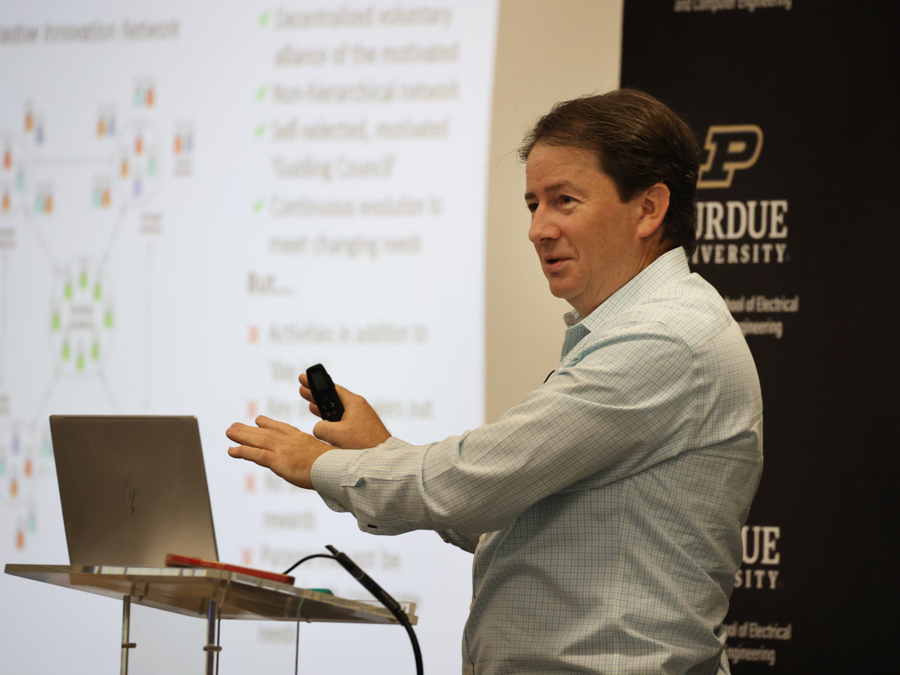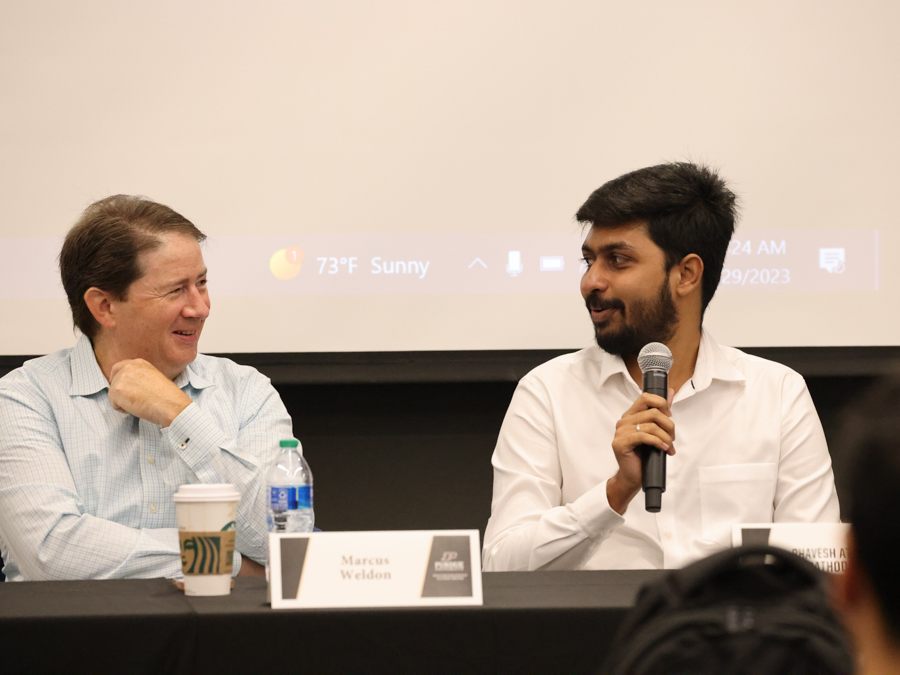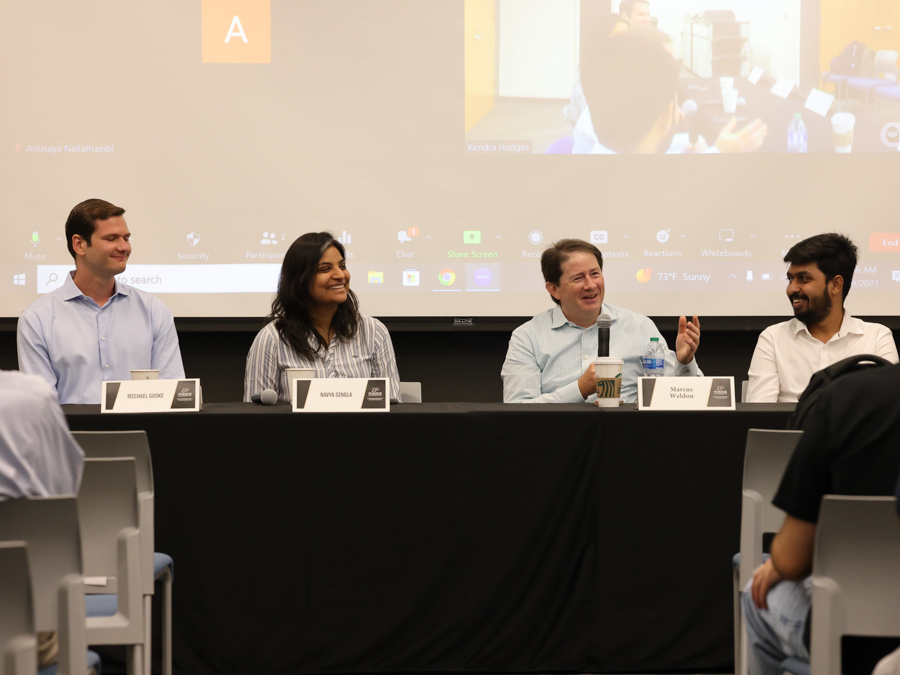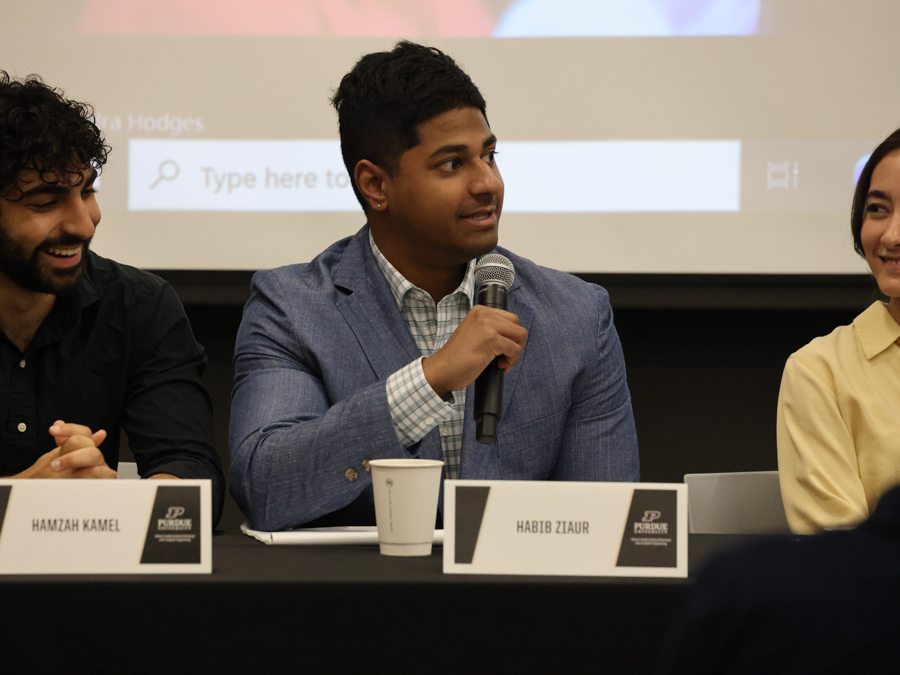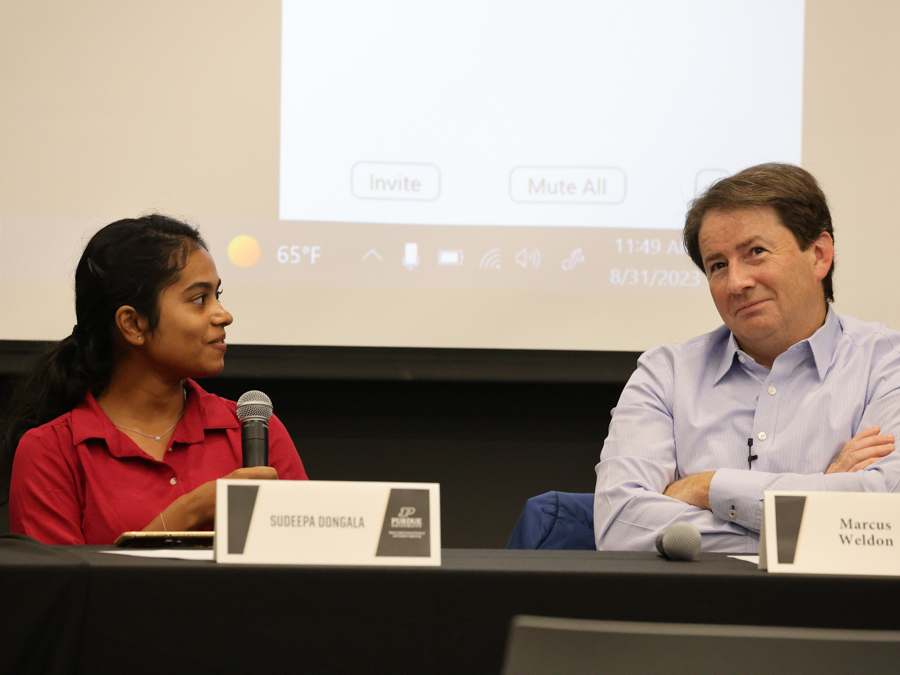Marcus Weldon
Neil Armstrong Distinguished Visiting Professor (2023-2024)
Marcus Weldon is currently working on his "next big thing" and helping small, medium and large companies and institutes formulate their technical and innovation strategies for the next industrial revolution.
Until March 2021, Weldon was the Corporate Chief Technology Officer for Nokia and was responsible for coordinating the technical strategy and driving technological and architectural innovations into Nokia's end-to-end networking systems and software portfolio. In addition, as president of Bell Labs, Weldon was responsible for defining and creating the next disruptive innovations and the pioneering research that will form the foundation of the future ICT industry.
Weldon is considered one of the luminaries in the ICT industry in terms of the clarity, depth and breadth of his vision. He combines his vision with the power of Bell Labs, to create a unique innovation engine whose goal is to "invent the future" of the networking and communications industry.
He holds a PhD (physical chemistry) degree from Harvard University and a bachelor of science (computer science and chemistry) joint degree from King's College in London. But more than these formal academic credentials, Weldon has a relentless curiosity that, coupled with a very analytical mind, drives him to continuously learn and understand any problem from a wide array of different angles, and in remarkable depth, across a diverse array of disciplines.
Weldon has won numerous technical, scientific and engineering society awards for his work and technical vision, and leadership throughout his career, but is arguably best known for his ability to distill complex, multi-dimensional problems into the essential “simple” answer or solution that should be pursued. For this reason, he is highly sought after as an advisor to governmental agencies and departments in the United States, the United Kingdom, Australia, and around the world, as well as to industrial and enterprise CXOs, venture capitalists, private equity funds, and the larger investment community.
Dr. Weldon's Impact
- Marcus is the former corporate chief technology officer for Nokia, responsible for driving technological and architectural innovations into the company’s end-to-end networking systems and software portfolio. He also served as president of Bell Labs, where he led pioneering research in the information and communications technology (ICT) industry.
- “I was impressed by the maturity of the students — many of whom had worked prior to deciding to extend their education with the master’s program — and their receptiveness to feedback, as well as their intelligent responses to that feedback.”
-Marcus Weldon
- “Weldon’s thoughts on the innovation ecosystem “did a lot to shape my own thinking, and the direction of the department, as we put together programs on entrepreneurship and innovation for our students. Some of the new programs that we are looking to launch in the next year were definitely influenced by some of his thoughts and reflections.”
-Milind Kulkarni, the Michael and Katherine Birck Head and Professor of Electrical and Computer Engineering
Weldon worked with faculty members from the Elmore Family School of Electrical and Computer Engineering, project track master's students, as well as companies hosted by the John Martinson Entrepreneurial Center (JMEC). He delivered a lecture series, "Critical Perspectives on Innovation" and "Essential Perspectives on the Future" in the start-up community and provided career advice and professional guidance to participating ECE students and JMEC companies.
Lectures
Critical Perspectives on Innovation Part 1: Learning from the Past
There is a tendency to believe that there is only one model for innovation that ‘works’: the venture capital-funded ‘start-up’ model. There is no doubt that this model has had success over the past few decades, but at its heart it is often a statistical game of chance, with an associated funding and feedback model that is financially rigorous but that undervalues real technological value or breakthroughs. In this lecture I will review this model in the context of other innovation models that exist or have existed and compare and contrast their relative merits.
Critical Perspectives on Innovation Part 2: Inventing the Future
Building on the perspective developed in the first lecture in the series, this lecture will examine the most promising routes and methodologies to follow today, to both invent something new and then successfully implement a solution that should have real market impact. The common elements of each approach will be highlighted, as well as the differences, and under what circumstances each is the optimum choice.
Essential Perspectives on the Future: The Age of Human Augmentation and the Next Industrial Revolution
This final lecture in the series will build on the preceding two lectures and examine the types of roles that will be most changed in the new productivity era. We will also look at a number of different examples of industries that are leading this transformation. Last, we will consider the roles that different innovation organizations could play and contemplate the need for a new innovation vehicle to provide the maximum value to the largest cross-section of industries.
Rapid Fire Project Pitches
Photos

